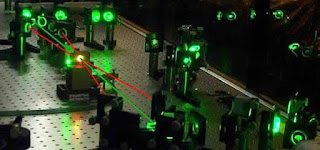Ultrafast Laser
How to define ultrafast laser
An ultrafast laser emits extremely short pulses of light, typically in the femtosecond (10^-15 seconds) or picosecond (10^-12 seconds) range. These lasers can produce very high intensities of light, which can be used for various applications such as materials processing, micro-machining, and medical diagnostics.
The speed and
precision of ultrafast lasers are due to their unique design, which involves specialized
gain media and optical components. In particular, ultrafast lasers use gain
media with very short lifetimes, allowing them to emit light in very short
pulses. Additionally, they use optical components designed to manipulate light
pulses, allowing them to be focused on very small spots or shaped into complex
patterns.
One of the most
important applications of ultrafast lasers is in materials processing and
micro-machining. Because the pulses of light are so short, they can remove
material from a surface without causing significant heat damage or other
thermal effects. This makes ultrafast lasers ideal for precisely machining
delicate materials like semiconductors or biological tissue.
Ultrafast
lasers are also used in medical diagnostics, where they can create very
high-resolution images of biological tissues. By focusing light pulses onto a
sample, ultrafast lasers can generate images with resolutions far beyond those
of traditional optical microscopy techniques.
Overall, ultrafast lasers are a
powerful tool for a wide range of applications, offering unmatched speed and
precision in generating and manipulating light.



Comments
Post a Comment